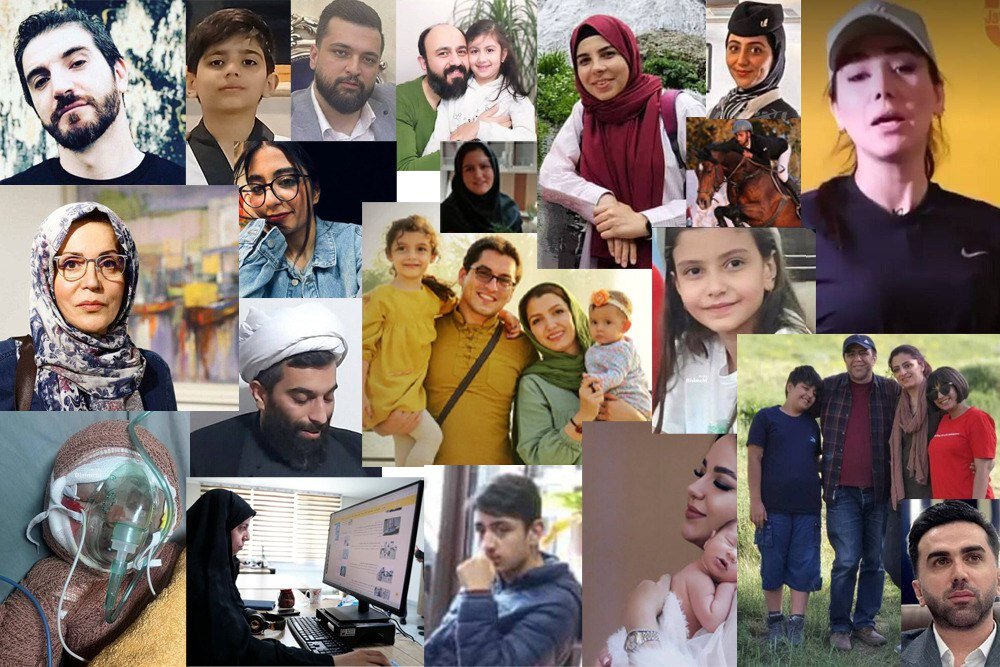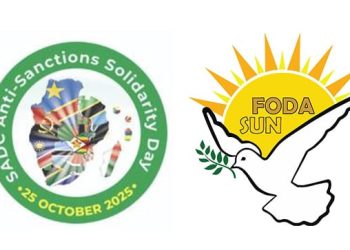Introduction
In the early hours of 13 June 2025, Israeli military forces violated the sovereignty and territorial integrity of an independent country through an armed attack against Iran. According to official reports, this assault—which included airstrikes and sabotage operations—resulted in casualties and damage, constituting a blatant violation of international law. In recent decades, Israel has consistently violated the airspace and territorial integrity of several Middle Eastern nations, including Palestine, Lebanon, and Syria—actions that have drawn widespread condemnation from international bodies. The significant escalation of military conflicts in the Gaza Strip since 2023 has raised serious concerns among human rights institutions, which have repeatedly alerted the public to the potential for civilian casualties and the destruction of critical infrastructure. The recent incursion into Iranian territory can be understood within this broader pattern of aggressive and belligerent behavior, facilitated by the global community’s indifference and lack of an effective response to such unilateral actions. This text reviews instances of Israel’s violations of international law during its unprovoked military actions against Iran.
Inadmissibility of Engaging in Preemptive Self-Defense
Israel asserts that it executed a preemptive measure in response to an imminent threat posed by Iran. However, pursuant to international law, the doctrine of preemptive self-defense lacks legal validity. Article 51 of the United Nations Charter unequivocally stipulates that the right to self-defense is permissible solely in the event of an armed attack against a member state (https://www.un.org/en/about-us/un-charter/full-text). Moreover, according to the International Court of Justice’s ruling in the Oil Platforms case (Iran v. United States of America), even an armed attack must meet a high threshold of severity (https://www.icj-cij.org/sites/default/files/case-related/90/090-20031106-JUD-01-00-EN.pdf). Yet, prior to Israel’s attack, no armed attack whatsoever had been conducted by the Iranian government against the aggressor regime. Moreover, senior Iranian military commanders were targeted in their private residences, demonstrating conclusively that no imminent attack plan against Israeli territory existed on Iran’s part.
The Assassination of Senior Iranian Military Commanders and Scientists
Targeted assassinations and extrajudicial killings have constituted a foundational policy of Israel since its establishment. In recent decades, military, political, and scientific individuals from various jurisdictions, including but not limited to Egypt, Syria, Iraq, and Iran, have been subjected to Israel’s assassination operations. During the 12-day conflict initiated by Israel against Iran, this policy of targeted killings was systematically executed by the aggressor state. Such actions represent a serious infraction of the right to life, a fundamental human right explicitly protected under Article 3 of the Universal Declaration of Human Rights (https://www.un.org/en/about-us/universal-declaration-of-human-rights) and Article 6 of the International Covenant on Civil and Political Rights (ICCPR) (https://www.ohchr.org/en/instruments-mechanisms/instruments/international-covenant-civil-and-political-rights).

One of the objectives of Israel’s military operations was the targeted elimination of Iranian nuclear scientists. During this war, particularly within the initial hours, the following individuals were martyred: Mohammad Mehdi Tehranchi, Akbar Matlabi-Zadeh, Ahmadreza Zolfaghari, Seyed Amir Hossein Feghhi, Abdolhamid Minouchahr, Fereydoon Abbasi, Saeed Borji, Mansour Asgari, Ali Baghaei Karimi, Ali Bakouei, and Mohammad Reza Seddighi Saber (https://www.presstv.ir/Detail/2025/06/14/749807/profiles-iranian-nuclear-scientists-assassinated-latest-israeli-aggression). The assassination of Iranian nuclear scientists exemplifies a violation of the right to life and constitutes an act of state terrorism. Moreover, as civilians, they do not qualify as legitimate targets in times of conflict. Notably, these scientists were specifically targeted in their homes in the presence of their families.
Numerous Iranian military commanders targeted in these attacks were assassinated in their private residences. While these individuals held military positions, their targeting violated international humanitarian law on two counts: (1) they were located in civilian areas, and (2) they were killed alongside their civilian family members. Among the victims was Major General Mohammad Bagheri, the Head of the General Staff of the Armed Forces of the Islamic Republic of Iran, who was martyred alongside his wife and daughter (https://www.eghtesadonline.com/008faX); Major General Gholam Ali Rashid (Commander of the Khatam al-Anbiya Central Headquarters) was also targeted in his private residence alongside his son, resulting in their martyrdom (https://www.etemadonline.com/tiny/news-718343). It should be noted that the targeted attacks against Iranian scientists and military commanders in residential areas have also resulted in civilian casualties among their neighbors.
Attacks Against Civilian Individuals and Areas
Pursuant to the most recent statistical data as of early July 2025, it is reported that approximately 1,060 Iranian individuals have killed as a result of hostilities perpetrated by the Israeli regime, with projections indicating an anticipated increase in the fatality count. Of these individuals, it is estimated that 436 were civilians (https://apnews.com/article/iran-israel-war-death-toll-569128effa8aafd9d9bd04efe5c0de75). Under Articles 51 and 52 of Additional Protocol I to the Geneva Conventions, civilian persons, objects, and locations must never be the targets of armed attacks (https://ihl-databases.icrc.org/en/ihl-treaties/api-1977); These provisions stem from the principle of distinction in international humanitarian law (IHL), which obliges all parties to a conflict to differentiate between civilians and combatants at all times. Consequently, attacks may only be directed against combatants (https://ihl-databases.icrc.org/en/customary-ihl/v1/rule1).
The principle of distinction constitutes the primary tenet enshrined in customary international humanitarian law (IHL) as promulgated by the International Committee of the Red Cross (ICRC). The Rome Statute of the International Criminal Court (ICC), in Article 8, categorically delineates direct assaults on all civilian objects—including individuals and entities—as war crimes. Moreover, Article 7 of the Statute characterizes widespread and systematic attacks against civilian populations as crimes against humanity, applicable in both contexts of armed conflict and peacetime (https://ihl-databases.icrc.org/en/ihl-treaties/icc-statute-1998). The Israeli regime has flagrantly violated these laws, committing both war crimes and crimes against humanity, as detailed below:
1- As noted above, during its first-day attacks on Tehran, Israel targeted residential areas with the intent to assassinate specific individuals. One of the most egregious crimes occurred when an entire building in Tehran’s Shahid Chamran Complex was destroyed to eliminate a single target, resulting in the deaths of 60 civilians, including 20 children (https://www.middleeastmonitor.com/20250614-60-civilians-including-20-children-killed-in-israeli-strike-on-single-building-in-iranian-capital/).
2- On 15 June 2025, Israel carried out attacks on Tehran’s Tajrish neighborhood. During one strike targeting Quds Square in Tajrish (a high-traffic area in Tehran), a building and vehicles stopped at a traffic light were hit, resulting in multiple civilian casualties and ruptured water pipelines (https://www.france24.com/en/middle-east/20250617-anatomy-of-an-air-strike-israeli-strike-hits-busy-tehran-intersection). Videos of this brutal attack were widely circulated in the media, sparking global outrage (https://www.aljazeera.com/video/newsfeed/2025/7/3/iran-releases-video-of-israeli-strike-on-tehran-in-june). Saleh Bayrami, a famous graphic artist, was one of the victims of this war crime.
3- On 16 June, Israel attacked the glass building of the Islamic Republic of Iran Broadcasting, causing severe damage (https://www.nytimes.com/2025/06/16/world/middleeast/israel-iran-state-tv-attack.html). Media and news centers are classified as civilian entities, and assaults on such entities, which are situated in urban areas and in proximity to civilian and residential zones, lack legal justification. Conversely, journalists and correspondents are afforded special protection under international humanitarian law (https://ihl-databases.icrc.org/en/customary-ihl/v1/rule34) and the attack on the Iranian Broadcasting, which resulted in the martyrdom of a number of its employees, is considered a violation of this protection.
4- On June 23, 2025, Evin Prison in Tehran was subjected to an attack by Israel. This attack resulted in more than 70 fatalities and inflicted significant damage on the administrative, security, and medical sectors of the facility. The casualties comprised administrative staff, social workers, guards, conscript soldiers, medical personnel, and family members of prisoners who were present for visitation (https://news.sky.com/story/inside-irans-notorious-evin-prison-as-tehran-says-damage-shows-israel-targeted-civilians-13392407).
5- In the early hours of 24 June 2025, the Israeli military conducted an airstrike on residential areas in Astaneh-ye Ashrafiyeh, Gilan. The attack targeted the family home of Mohammad Reza Seddighi Saber in an attempt to assassinate him. This violent assault caused extensive destruction and resulted in the deaths of several Iranian citizens, including 12 members of Mr. Seddighi Saber’s family (https://en.irna.ir/news/85871550/Israeli-regime-targets-four-residential-units-in-northern-Iran).
The detailed cases above represent just a portion of the Israeli regime’s crimes targeting Iranian civilians and non-military residential zones. Multiple additional attacks have inflicted civilian casualties, documented and disseminated through media imagery and video evidence; including the attack on Sabounchi Street in Tehran on 15 June 2025 (https://www.asriran.com/004U6O) and the attack on Seyed Khandan neighborhood in Tehran on 15 June 2025 (https://www.sharghdaily.com/fa/tiny/news-1021706). On 17 June 2025, Israel also targeted two civilian vehicles in Najafabad, Isfahan, martyring members of two families in the attack (https://www.entekhab.ir/003et6).
Violation of The Rights of Children and Women in Israeli Attacks
According to statistics published as of July 30, approximately 38 children were martyred during the Israeli aggression against Iran (https://www.reuters.com/world/middle-east/935-people-killed-israeli-strikes-iran-iran-judiciary-spokesperson-says-2025-06-30). Rayan Ghasemian was the youngest child martyred in these attacks—just two months old at the time of his death (https://shrr.ir/001QEg). International humanitarian law (IHL), whether codified in treaties or recognized as customary international law, expressly confers special protection on children against the adverse effects of armed conflicts (https://ihl-databases.icrc.org/en/customary-ihl/v1/rule135#Fn_55028F4F_00001). The International Convention on the Rights of the Child (CRC) also explicitly emphasizes the right of children to protection during war (https://www.unicef.org/sop/convention-rights-child-child-friendly-version).
As of the time of writing, the latest statistics indicate that 138 women have been martyred as a result of Israeli attacks (https://www.reuters.com/world/middle-east/935-people-killed-israeli-strikes-iran-iran-judiciary-spokesperson-says-2025-06-30)—among the victims are pregnant women (https://irna.ir/xjTX4q).
Attacks on Hospitals, Humanitarian Aid Centers, and Relief Forces
International humanitarian law (IHL) strictly prohibits any attacks against medical facilities and relief centers (https://ihl-databases.icrc.org/en/customary-ihl/v1/rule35#Fn_A3ED779F_00005). The United Nations General Assembly, in its Resolution 2675 (1970), also explicitly emphasized the protection of hospitals and shelters from military attacks (https://digitallibrary.un.org/record/201888/files/A_RES_2675%28XXV%29-EN.pdf). Article 12 of Additional Protocol I to the Geneva Conventions explicitly states that medical facilities must be protected from military attacks at all times (https://ihl-databases.icrc.org/en/ihl-treaties/api-1977/article-12). Under the Rome Statute, violations of these prohibitions constitute war crimes.
During the 12-day war, Israel attacked seven Iranian hospitals, damaging several medical facilities. Additionally, multiple ambulances were targeted by the Israeli regime (https://www.sharghdaily.com/fa/tiny/news-1028479). On 13 June, Hakim Hospital, a facility specializing in pediatric care located in Tehran, was subjected to an attack, which was subsequently followed by an assault on Farabi Hospital in Kermanshah on 16 June (https://www.tehrantimes.com/news/514706/Fake-claims-real-crimes-Israel-targets-hospitals). The headquarters building of the Iranian Red Crescent Society (Peace Building) was not spared from Israeli attacks either.
Through multiple direct attacks on ambulances and rescue teams in Najafabad (Isfahan) (https://www.sharghdaily.com/fa/tiny/news-1023650), Tehran (https://www.tabnak.ir/005VKr), and West Azerbaijan Province (https://www.asriran.com/004U10), Israel has martyred several aid workers and civilians.
Attacks on Iranian Nuclear Facilities
Under Article 56 of Additional Protocol I (https://ihl-databases.icrc.org/en/ihl-treaties/api-1977/article-56?activeTab=) and customary international humanitarian law (https://ihl-databases.icrc.org/en/customary-ihl/v1/rule42), attacks on nuclear power plants are explicitly prohibited. Pursuant to international legal instruments, including UN Security Council Resolution 487 (1981) (https://digitallibrary.un.org/record/22225/files/S_RES_487%281981%29-EN.pdf) and IAEA Resolution 444 (https://www.iaea.org/sites/default/files/gc/gc29res-444_en.pdf), any assault on nuclear installations, including reactors or power generation facilities, constitutes a breach of international law and the United Nations Charter, thereby posing a threat to global peace. Attacks on nuclear facilities—particularly due to the risk of radioactive releases and irreversible environmental catastrophes—are reckless acts that threaten global security. The Chernobyl disaster serves as a stark reminder of the devastating consequences of radiation leaks, which can endanger millions of lives and degrade ecosystems for decades.
The Israeli regime, supported by the United States, has conducted attacks on Iran’s nuclear facilities, which are intended for peaceful purposes, in clear violation of international law and with a disregard for established safety protocols. It is noteworthy that these actions have not been condemned by the International Atomic Energy Agency (IAEA), the organization responsible for overseeing compliance with the Treaty on the Non-Proliferation of Nuclear Weapons (NPT), to which Iran is a committed state party and has been subject to the most stringent inspection regimes. By contrast, Israel—having declined to join the Nuclear Non-Proliferation Treaty (NPT) and operating its nuclear program with complete opacity—continues to infringe upon Iran’s sovereignty and violate international law, with the support of the United States. This double standard, along with the global community’s silence in response to aggression against a peaceful state, raises significant concerns regarding equity and justice within the international order. Such actions not only jeopardize regional and global security but also reveal a discriminatory policy that undermines peace and stability. The involvement of the United States is particularly hypocritical, given its support for United Nations Security Council Resolution 487 in 1981, which condemned Israel’s attack on Iraq’s nuclear facilities (https://www.justsecurity.org/116153/article-51-united-states-letter-iran-nuclear/).
The Appalling Statements Made by Officials from Certain Countries in Support of Israel
Despite the extensive war crimes committed by the Israeli regime, officials from several governments have publicly endorsed Israel’s territorial aggression against Iran. The United States, as Israel’s primary backer, has not only provided military and intelligence support but has also conducted direct military strikes against Iran. Meanwhile, Germany’s Chancellor, while acknowledging the dirty nature of Israel’s actions, has still extended political support for these attacks (https://www.wsj.com/livecoverage/israel-iran-conflict-news/card/german-chancellor-praises-israel-s-strikes-on-iranian-nuclear-sites-e4DQONX9O3xXmcEGWtnt). The President of Argentina went so far as to justify Israel’s crimes as “a defense of Western civilization” (https://x.com/visegrad24/status/1937434529343361299?s=19); a statement that not only whitewashes war crimes but also exposes the racist underpinnings of such rhetoric.
Conclusion
The article highlights only a portion of the war crimes and violations of human rights and humanitarian law committed by Israel against Iran. The inaction of the international community and the lack of a decisive response from governments to Israel’s campaign of killing and destruction have emboldened this regime to violate international peace and security without restraint. As this trend continues, other countries in the West Asian region and beyond will also face these threats.
Commemorating the Victims
Thanks to the efforts of some individuals in the country, virtual platforms have been established to honor the victims of Israel’s attacks on Iran. These pages feature images and brief descriptions of those who were killed:
https://www.instagram.com/killedbyisrael2025?igsh=ZDRkdHBvc3lsazVx
https://x.com/killedByIsraeli?s=09
References
- UN Charter, https://www.un.org/en/about-us/un-charter/full-text
- Oil Platforms (Islamic Republic of Iran v. United States of America), Judgment, I.C.J. Reports 2003, p. 161, https://www.icj-cij.org/sites/default/files/case-related/90/090-20031106-JUD-01-00-EN.pdf.
- Universal Declaration of Human Rights 1948, https://www.un.org/en/about-us/universal-declaration-of-human-rights.
- International Covenant on Civil and Political Rights 1966, https://www.ohchr.org/en/instruments-mechanisms/instruments/international-covenant-civil-and-political-rights
- Qarehgozlou, Maryam, Prominent Iranian Nuclear Scientists Assassinated In Latest Israeli Aggression, Press TV, (14 June 2025), https://www.presstv.ir/Detail/2025/06/14/749807/profiles-iranian-nuclear-scientists-assassinated-latest-israeli-aggression.
- Eghtesad Online, Assassination of the family of the Head of the General Staff of the Armed Forces, (15 June 2025), https://www.eghtesadonline.com/008faX. (In Persian)
- Etemad Online, Sardar Rashid’s son was also martyred along with his father in the Israeli attack, (13 June 2025), https://www.etemadonline.com/tiny/news-718343. (In Persian)
- AP News, Iran’s government says at least 1,060 people were killed in the war with Israel, (8 July 2025), https://apnews.com/article/iran-israel-war-death-toll-569128effa8aafd9d9bd04efe5c0de75.
- Protocol Additional to the Geneva Conventions of 12 August 1949, and relating to the Protection of Victims of International Armed Conflicts (Protocol I), 1977, Articles 51-52, https://ihl-databases.icrc.org/en/ihl-treaties/api-1977. (hereinafter Protocol I)
- Customary International Humanitarian Law, Rule 1, https://ihl-databases.icrc.org/en/customary-ihl/v1/rule1.
- Rome Statute of the International Criminal Court, Articles 7-8, (17 July 1998), https://ihl-databases.icrc.org/en/ihl-treaties/icc-statute-1998. (Rome Statute),
- Middle east monitor, 60 civilians, including 20 children, killed in Israeli strike on single building in Iranian capital, (14 June 2025), https://www.middleeastmonitor.com/20250614-60-civilians-including-20-children-killed-in-israeli-strike-on-single-building-in-iranian-capital/.
- France 24, Anatomy of an air strike: Israeli strike hits busy Tehran intersection, (17 June 2025), https://www.france24.com/en/middle-east/20250617-anatomy-of-an-air-strike-israeli-strike-hits-busy-tehran-intersection.
- Al-Jazeera, Iran releases video of Israeli strike on Tehran in June, (3 July 2025), https://www.aljazeera.com/video/newsfeed/2025/7/3/iran-releases-video-of-israeli-strike-on-tehran-in-june.
- Boxerman, Aaron et.al, Israel Attacks Iran’s State Television, Live on the Air, New York Times, (16 June 2025), https://www.nytimes.com/2025/06/16/world/middleeast/israel-iran-state-tv-attack.html.
- Customary International Humanitarian Law, Rule 34, https://ihl-databases.icrc.org/en/customary-ihl/v1/rule34.
- Waghorn, Dominic, Inside Iran’s Evin Prison – as Tehran says damage shows Israel targeted civilians, Sky News, (5 July 2025), https://news.sky.com/story/inside-irans-notorious-evin-prison-as-tehran-says-damage-shows-israel-targeted-civilians-13392407.
- Irna, Israeli regime targets four residential units in northern Iran, (24 June 2025), https://en.irna.ir/news/85871550/Israeli-regime-targets-four-residential-units-in-northern-Iran.
- Asr Iran, Latest Details on Israel’s Attack on Residential Homes in Tehran’s Sabounchi Neighborhood, (15 June 2025), https://www.asriran.com/004U6O. (In Persian)
- Shargh Daily, Israeli Regime’s Attack on Residential Building in Seyed Khandan, Tehran, (15 June 2025), https://www.sharghdaily.com/fa/tiny/news-1021706. (In Persian)
- Entekhab, Israel martyred members of two families in its attack on the city of Najafabad, Isfahan, yesterday by targeting two vehicles, (18 June 2025), https://www.entekhab.ir/003et6. (In Persian)
- Reuters, 935 people killed in Israeli strikes on Iran, official says, (30 June 2025), https://www.reuters.com/world/middle-east/935-people-killed-israeli-strikes-iran-iran-judiciary-spokesperson-says-2025-06-30.
- Shahrara news, The story of “Rayan”, the youngest martyr in Iran these days, (17 June 2025), https://shrr.ir/001QEg. (In Persian)
- Customary International Humanitarian Law, Rule 135, https://ihl-databases.icrc.org/en/customary-ihl/v1/rule135#Fn_55028F4F_00001.
- Convention on the Rights of the Child 1989, https://www.unicef.org/sop/convention-rights-child-child-friendly-version.
- Reuters, 935 people killed in Israeli strikes on Iran, official says, (30 June 2025), https://www.reuters.com/world/middle-east/935-people-killed-israeli-strikes-iran-iran-judiciary-spokesperson-says-2025-06-30.
- Irna, 935 people martyred in Israeli attacks/pregnant women also martyred, (30 June 2025), https://irna.ir/xjTX4q. (In Persian)
- Customary International Humanitarian Law, Rule 35, https://ihl-databases.icrc.org/en/customary-ihl/v1/rule35#Fn_A3ED779F_00005.
- UN General Assembly, Res. 2675 (XXV), https://digitallibrary.un.org/record/201888/files/A_RES_2675%28XXV%29-EN.pdf.
- Protocol 1, Article 12, https://ihl-databases.icrc.org/en/ihl-treaties/api-1977/article-12.
- Shargh Daily, Israel directly attacks 7 hospitals in 12-day war, (9 July 2025), https://www.sharghdaily.com/fa/tiny/news-1028479. (In Persian)
- Tehran Times, Fake claims, real crimes: Israel targets hospitals, (20 June 2025), https://www.tehrantimes.com/news/514706/Fake-claims-real-crimes-Israel-targets-hospitals.
- Shargh Daily, Israeli drone attack on an ambulance in Najafabad / 3 people martyred, (23 June 2025), https://www.sharghdaily.com/fa/tiny/news-1023650. (In Persian)
- Tabnak, The Zionist regime attacked this ambulance in Tehran, (17 June 2025), https://www.tabnak.ir/005VKr. (In Persian)
- Asr Iran, Israeli attack on ambulance in West Azerbaijan leaves 2 martyrs, (14 June 2025), https://www.asriran.com/004U10. (In Persian)
- Protocol I, Article 56, https://ihl-databases.icrc.org/en/ihl-treaties/api-1977/article-56?activeTab=.
- Customary International Humanitarian Law, Rule 42, https://ihl-databases.icrc.org/en/customary-ihl/v1/rule42.
- Security Council, Res 487, https://digitallibrary.un.org/record/22225/files/S_RES_487%281981%29-EN.pdf.
- Atomic Energy Agency, Res 444, https://www.iaea.org/sites/default/files/gc/gc29res-444_en.pdf.
- Finucane, Brian, Assessing the U.S. Article 51 Letter for the Attack on Iran: Legal Lipstick on the Use of Force Pig, Just Security, (3 July 2025), https://www.justsecurity.org/116153/article-51-united-states-letter-iran-nuclear/.
- Norman, Laurence, German Chancellor Praises Israel’s Strikes on Iranian Nuclear Sites, Wall Street Journal, (18 June 2025), https://www.wsj.com/livecoverage/israel-iran-conflict-news/card/german-chancellor-praises-israel-s-strikes-on-iranian-nuclear-sites-e4DQONX9O3xXmcEGWtnt.
- Visegrad 24, https://x.com/visegrad24/status/1937434529343361299?s=19.





